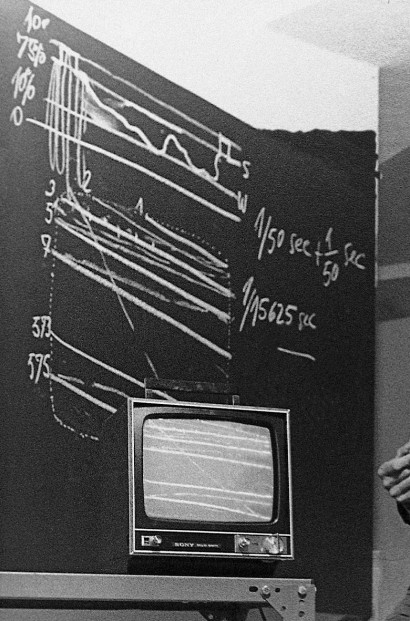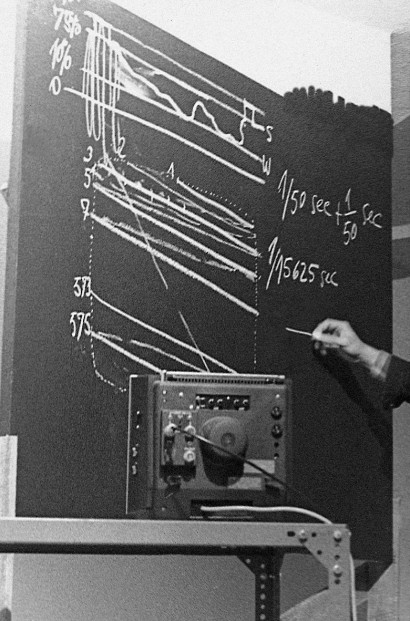The Monitor Speaks Its Language
Referring to the diverging views of Ludwig Wittgenstein and Oswald Wiener about the relationship between image and reality or, respectively, model and reality, I clung to whatever we know with certainty about the TV image, since it is the physically and electronically realised image construction, according to the CCIR standard set down in international resolutions in Geneva in 1950.
Ludwig Wittgenstein,
Tractatus logicus-philosophicus
2.223 In order to know whether the image is true or false, we must compare it to reality. (2.12 The image is a model of reality.)
Oswald Wiener, Die Verbesserung von Mitteleuropa, page XLII
The comparison of a model with reality is the comparison of a model with another model. Reality is unbeheld.
In the closed circuit of a blackboard surface, a -> videocamera scanning a section of that surface, a -> monitor representing that section -> and the viewer’s mind, I schematically executed, while controlling the writing chalk in my hand via the monitor, directly before the eyes of the present observers, what the TV apparatus produces: image after image oscillations of a luminescent field of lines in the following alternating frequencies: 5 MHz – 15625 Hz – 50 Hz. I finally turned the monitor towards the observers present: Nothing changed: Merely a TV image representing its own image generation scheme: image-immanent reality as the final image content.
Like all appearances, those of the TV image are ever provisional cues in our project. By themselves, they can only convince us of their own existence.
© 1978 SKERBISCH



